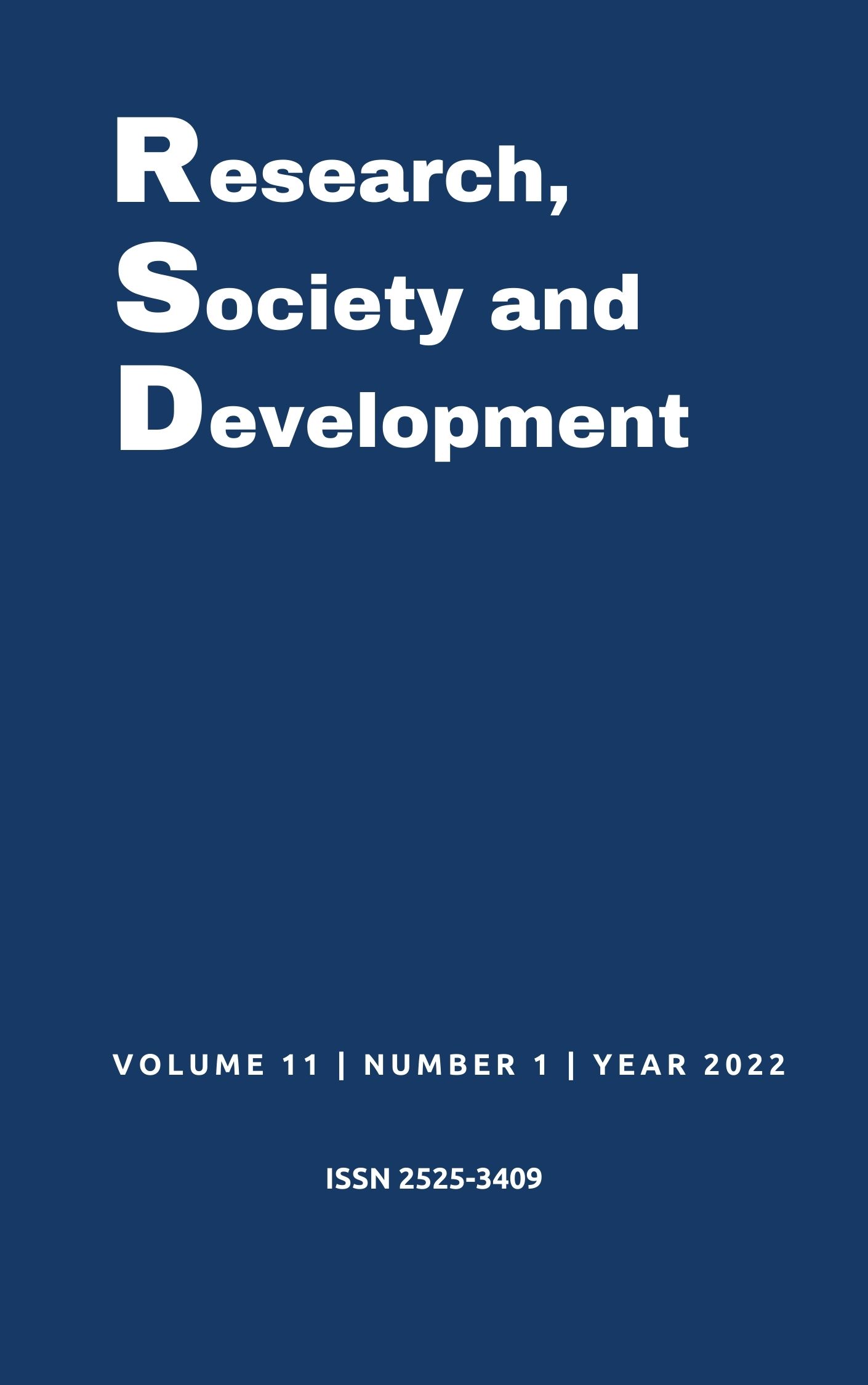Cavendish banana quality criteria for commercialization: Retail chain of Alto Tietê Region
DOI:
https://doi.org/10.33448/rsd-v11i1.24679Keywords:
Banana farming, Food supply chain, Quality control, Retail-Wholesale Monitoring.Abstract
The quality classification of fruits and vegetables is used to select safety products for human consumption. Thus, this paper aims to investigate the quality classification system of the banana supply chain offered in retail and wholesale in Alto Tietê Region, Brazil. We collected 239 bananas from 12 main retail-wholesaler and applied the Banana Classification Criteria, of the Brazilian Modernization of Horticulture Program & Integrated Fruit Production. Therefore, we considered the quality criteria: gross and net weight, length, caliber, degree of maturation, and the number of defects. We observed that the banana showed a good classification with an average of gross and net weight respectively 156.49 ± 39.62 and 98.93 ± 30.11, length 21.11 ± 2.35, caliber 37.06 ± 3.08. We found an association among quality criteria and bananas classification (Dunn test, p < 0.05), as well as, among kind of defects and lots analyzed (χ² = 98.11; p < 0.05). Thirty-eight percent of the total bananas evaluated were free of defects, but 62% showed some kind of defects. In addition, considering the banana classification process we proposed a framework correct destination, such as 44% of banana should be sent to the organic fertilizer industry, 17% to the animal feed industry, 1% to the human food industry, and 38% to fresh sales in the market to human consumption. We concluded that the classification process help in the transparency of the food supply chain and the quality monitoring and control should be continuous during the fruits are exposed to sale to the consumer, guarantee the food safety, waste reduction, and correct destination of bananas that are not good for commercialization.
References
Almeida, G. V. B. (2021). A importância da pós-colheita: hortifrutis são alimentos vivos e precisam de cuidados especiais. https://ceagesp.gov.br/entrepostos/servicos/artigos-estudos-e-publicacoes/artigos/a-importancia-da-pos-colheita/.
Camargo Filho, W.P. & Camargo, F.P. (2019). PIB da produção de hortaliças no Estado de São Paulo, 2017. Revista de Agronegócio, Instituto de Economia Agrícola. https://revistadeagronegocios.com.br/iea-instituto-de-economia-agricola-pib-da-producao-de-hortalica…
Ceagesp, Companhia de Entrepostos e Armazéns Gerais de São Paulo. (2021). Carta anual de políticas públicas e governança corporativa 2020. http://ceagesp.gov.br/acesso-a-informacao/governanca/carta-anual-de-politicas-publicas-e-governanca-corporativa/
Cna, Confederação da Agricultura e Pecuária do Brasil. (2020). Pib do agronegócio alcança participação de 26,6% no Pib brasileiro em 2020. https://www.cnabrasil.org.br/assets/arquivos/boletins/sut.pib_dez_2020.9mar2021.pdf
Dabbene, F. & Gay, P. (2011). Food traceability systems: Performance evaluation and optimization. Computers and Electronics in Agriculture, 75 (1), 139–146.
Franco, C.; Pedersen, S. M.; Papaharalampos, H. & Ørum, J. E. (2017). The value of precision for image-based decision support in weed management. Precision Agriculture, 18 (3), 366–382.
Hsiao, Y.-H.; Chen, M.-C. & Chin, C.-L. (2017). Distribution planning for perishable foods in cold chains with quality concerns: Formulation and solution procedure. Trends in Food Science & Technology, 61, 80–93.
Ibge, Instituto Brasileiro de Geografia e Estatística. (2018). População estimanda: Arujá, Biritiba Mirim, Ferraz de Vasconcelos, Guararema, Guarulhos, Itaquaquecetuba, Mogi das Cruzes, Poá, Salesópolis, Santa Branca, Santa Isabel e Suzano. https://cidades.ibge.gov.br/
Ibge, Instituto Brasileiro de Geografia e Estatística. (2020). Área, Produção e Rendimento Médio - Confronto das safras de 2020 e das estimativas para 2021. https://www.ibge.gov.br/estatisticas/economicas/agricultura-e-pecuaria/9201-levantamento-sistematico-da-producao-agricola.html?=&t=resultados
Kondo, N. (2010). Automation on fruit and vegetable grading system and food traceability. Trends in Food Science & Technology, 21 (3), 145–152.
Lindblom, J.; Lundström, C.; Ljung, M. & Jonsson, A. (2017). Promoting sustainable intensification in precision agriculture: review of decision support systems development and strategies. Precision Agriculture, 18 (3), 309–331.
Macheka, L.; Spelt, E.; Vorst, J. G.A.J. van der. & Luning, P. A. (2017). Exploration of logistics and quality control activities in view of context characteristics and postharvest losses in fresh produce chains: A case study for tomatoes. Food Control, 77, 221–234.
Pbmh & Pif, Programa Brasileiro para a Modernização da Horticultura & Produção Integrada de Frutas. (2006). Normas de Classificação de Banana. São Paulo: Ceagesp, Documentos, 29.
Rocha, C. S.; Silva, D. M. C. T.; Simonato, A. L. & Gorayeb, R. C. C. (2018). Classificação de banana nanica (Musa Cavendishi) para a produção de bananas passas. Mobilizar o Conhecimento para Alimentar o Brazil, 529-533.
Soares, J. M. S.; Silva, M. S.; Nascimento, F. S.; Gonçalves, Z. S.; Souza, T. R.; Rodrigues, T. C.; Sousa, Y. M. & Souza, H. B. F. (2020). Preferências dos consumidores de banana quanto à qualidade do fruto em Cruz das Almas – BA. Revista Agrária Acadêmica, 3 (6), 86-95.
Trienekens, J. & Wognum, N. (2013). Requirements of supply chain management in differentiating European pork chains. Meat Science, 95 (3), 719–726.
Yap, M.; Fernando, W.; Brennan, C.; Jayasena, V. & Coorey, R. (2017). The effects of banana ripeness on quality indices for puree production. {LWT} - Food Science and Technology, 80, 10–18.
Downloads
Published
Issue
Section
License
Copyright (c) 2022 Grasiéle Émili Ferreira de Morais; Adriano Maniçoba da Silva; Régis Cortez Bueno; Wilson Yoshio Tanaka; Eugenio de Felice Zampini; João Gilberto Mendes dos Reis; Sivanilza Teixeira Machado

This work is licensed under a Creative Commons Attribution 4.0 International License.
Authors who publish with this journal agree to the following terms:
1) Authors retain copyright and grant the journal right of first publication with the work simultaneously licensed under a Creative Commons Attribution License that allows others to share the work with an acknowledgement of the work's authorship and initial publication in this journal.
2) Authors are able to enter into separate, additional contractual arrangements for the non-exclusive distribution of the journal's published version of the work (e.g., post it to an institutional repository or publish it in a book), with an acknowledgement of its initial publication in this journal.
3) Authors are permitted and encouraged to post their work online (e.g., in institutional repositories or on their website) prior to and during the submission process, as it can lead to productive exchanges, as well as earlier and greater citation of published work.


